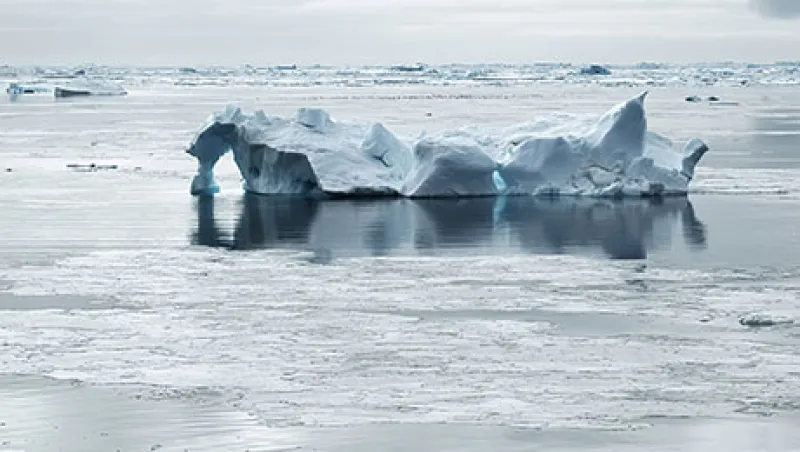Philippe Desfossés, CEO of Etablissement de Retraite additionnelle de la Fonction publique, sees a changing climate when it comes to the French public pension fund’s investment policy.
In the months leading up to December’s United Nations–hosted Climate Change Conference in Paris — where world leaders will convene to sign off on agreed-upon emissions reductions targets and other climate goals — €21 billion ($23 billion) ERAFP is getting bolder in “experimenting” with decarbonizing its investments, Desfossés says. Last September the fund announced that it was working with French asset manager Amundi to design a €750 million low-carbon portfolio to sit within its indexed management mandate. The resulting index filters out the 5 percent of companies that pollute the most and the top 20 percent of polluters in each sector.
As the Paris talks approach, Desfossés believes his Paris-based fund has license to “be more active” on such low-carbon strategies. “Right now business as usual is risky,” he says. “Imagine that in December we have a big global agreement and there’s a tax on fossil fuels. We have to manage that risk.”
ERAFP is far from the only institutional investor gearing up — and pushing — for big changes at the U.N. gathering. Although institutions around the world have realistic expectations, they’re hopeful that governments will move toward stricter climate policies.
For these investors the ideal final agreement in December would ensure not only public financing for climate-friendly projects around the world but the ramp-up of government mechanisms like co-investing and derisking to encourage the private sector to get involved. Steps toward establishing carbon pricing in various markets would help provide the certainty that many investors seek to decarbonize their portfolios.
“Investors are moving forward in [climate-friendly] investment themes while accepting that there will be some volatility in the policy environment,” says Nathan Fabian, CEO of the Investor Group on Climate Change Australia/New Zealand, a Sydney-based organization comprising institutional investors in the region that collectively manage about A$1 trillion ($773 billion) in assets. “This is a big change from where we were two to three years ago. Negotiators and countries involved in the climate negotiation process are seeing that markets are trying to move, so we have this reinforcing situation.”
Last September, just before the U.N. Climate Summit in New York, 350 global institutional investors managing a total of $24 trillion signed on to a statement drafted by six groups, including Fabian’s. The statement called for an ambitious global deal in Paris, with an emphasis on encouraging stable carbon pricing mechanisms and phasing out fossil-fuel subsidies.
In February the initial negotiating document — the foundation for the Paris talks — was released after negotiators met in Geneva. The 86-page paper lays out all possible options and targets, giving few clues as to the final shape of the agreement.
“What they did in Geneva was the easy part,” says Damian Ryan, head of international policy at the Climate Group, a London-based nonprofit that advocates for lower carbon emissions. “They took everything and dumped it into a box without any filtering, and said, ‘We’re not going to disagree with what’s in there.’” Negotiations to start pruning the document and settling on goals will begin in Bonn, Germany, in early June and continue through the rest of the year.
Ryan says investors now want to see the country-specific commitments called intended nationally determined contributions, or INDCs, which will start to be made public at the end of March. The INDC system represents a departure from previous U.N.-hosted climate-change discussions, where countries were assigned targets rather than setting their own.
“The way we see these documents is as an investment prospectus from countries, basically saying, ‘This is how we’re going to decarbonize our economy. This is how we’re going to scale up renewables, to radically increase energy efficiency, to transform the transport system,’” Ryan explains. “If you think of the Paris document as creating the legal and institutional framework, the INDCs set the ambition for the deal.”
Beyond paying close attention to the goals that emerge from the Paris talks, institutional investors aim to have a hand in shaping the language of the agreement. The investor members of Fabian’s IGCC Australia/New Zealand are weighing in on the wording and rules for the Green Climate Fund, a funding mechanism under the U.N. Framework Convention on Climate Change, through the private sector officers advising the GCF. Although U.N.FCCC agreements and negotiations are the domain of the countries involved, Fabian hopes that these efforts will demonstrate interest in public climate finance and describe how public funding can be used to attract private investment and co-investment.
“Public finance needs to derisk; it needs to coinvest; it needs to absorb some volatility in the energy and emission reductions domains,” he says. Fabian thinks the dollar amounts contributed by individual countries will be less important than the wording around how that capital encourages private investment.
ERAFP’s Desfossés stresses that investors like his fund would be eager to allocate to low-carbon infrastructure such as upgrades to the energy grid if government policy made it easier. Until last month ERAFP wasn’t even allowed to invest in infrastructure funds, he notes. “We have a unique opportunity to fix this now.”






